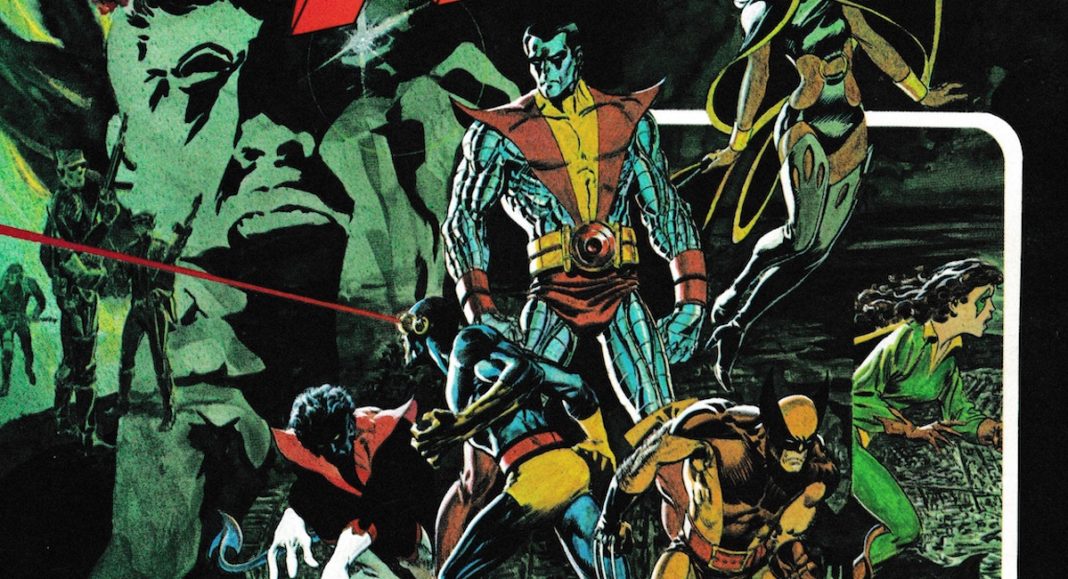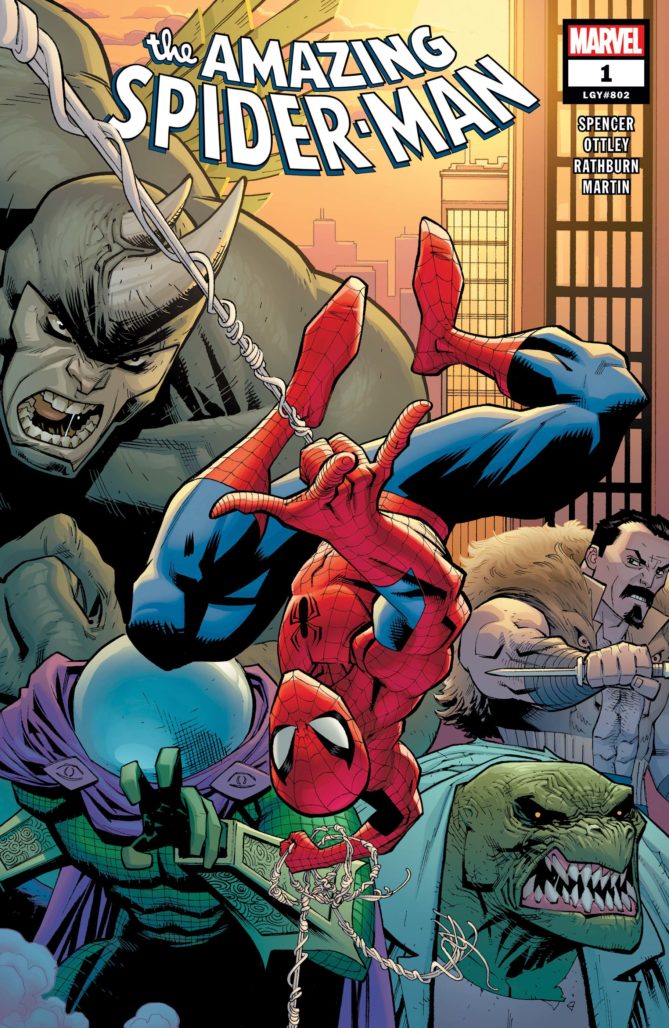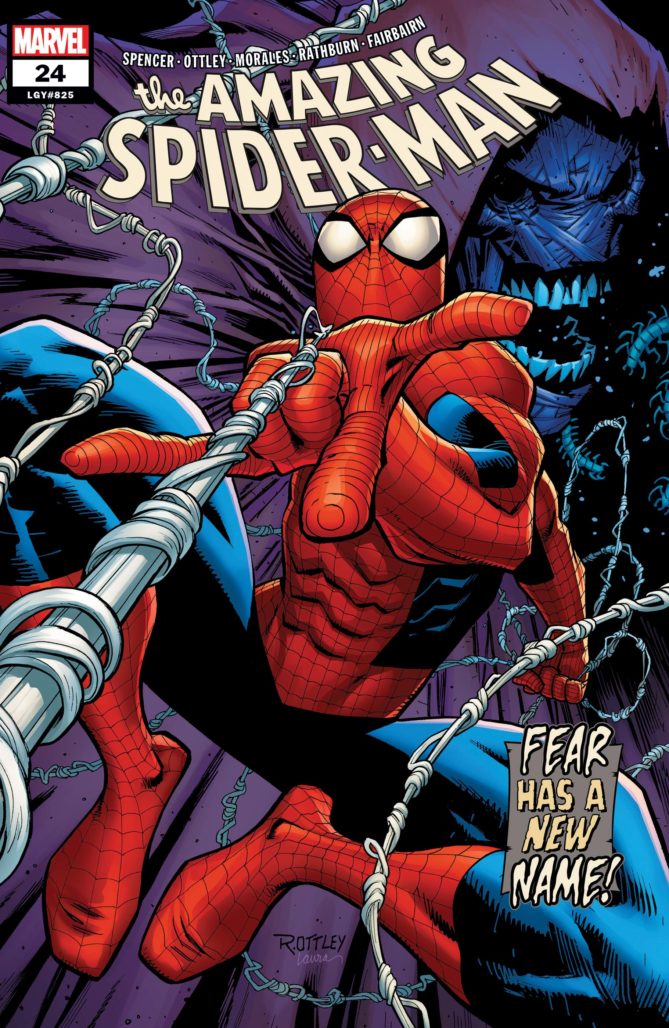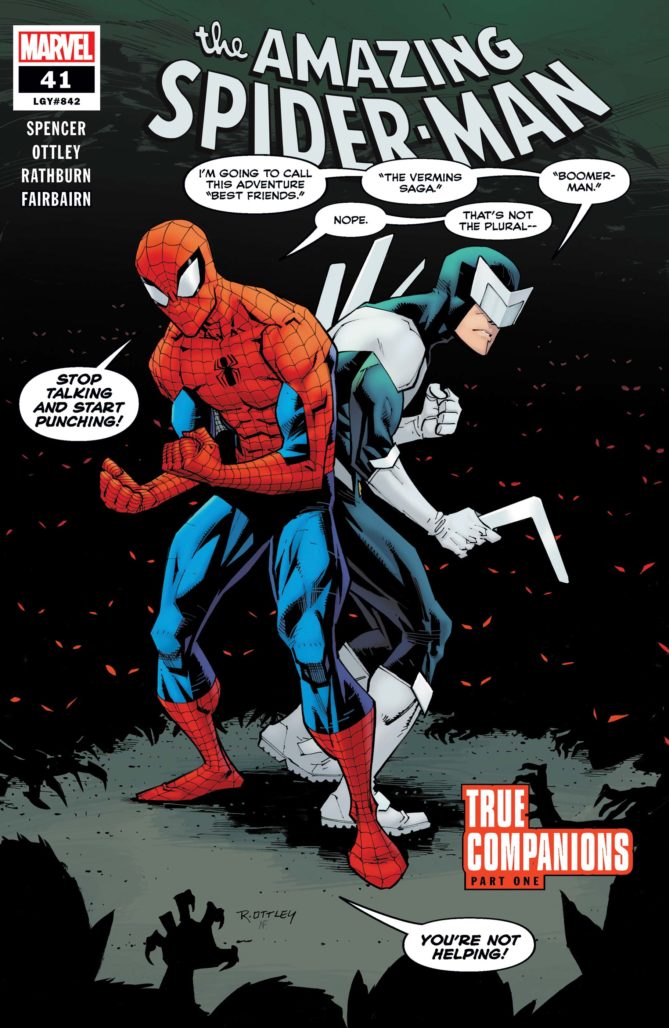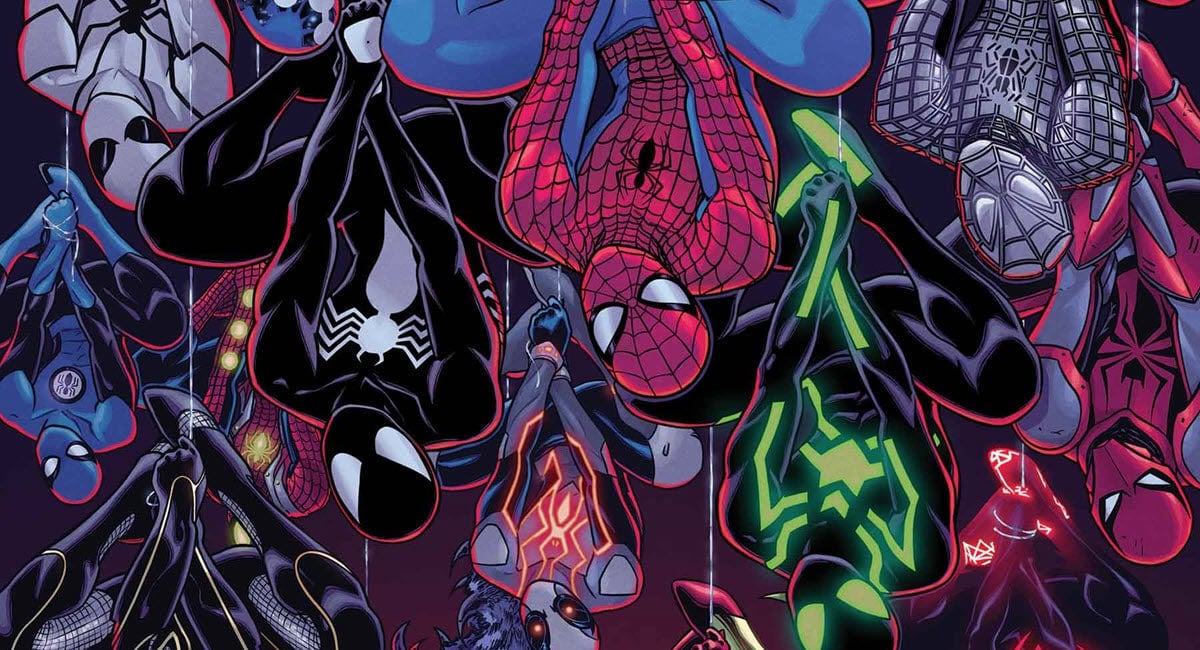With no new Marvel titles on offer this week (or for the foreseeable future), The Marvel Rundown team is taking the opportunity to look back at some classic Marvel comics of yesteryear until your regularly scheduled new books resume.
This week would have seen the release of the first part of an ‘extended cut’ of X-Men: God Loves, Man Kills, the classic X-Men story by Chris Claremont and Brent Anderson, featuring a new modern-day framing sequence by the creative team. With that in mind, we’re revisiting the full original story. How well has the story aged, and does it deserve its place in the upper echelons of X-Men tales?
Read on for our discussion of this seminal book, as well as a recommendation on a recent Marvel series to catch up on while you’re social distancing, all ahead in this week’s installment of The Marvel Rundown!
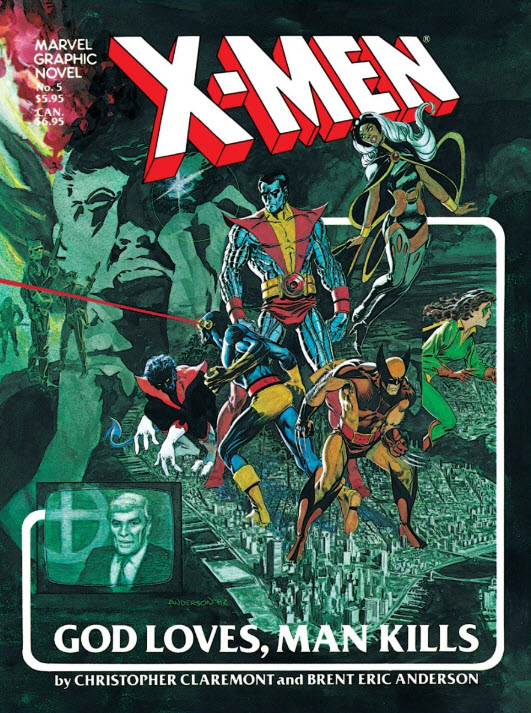
Marvel Graphic Novel #5: X-Men: God Loves, Man Kills
Written by Chris Claremont
Illustrated by Brent Anderson
Colored by Steve Oliff
Lettered by Tom Orzechowski
Cover by Brent Anderson
Joe Grunenwald: We’re beginning our revisit of some of Marvel’s best books with a look at the classic 1982 X-Men story, God Loves, Man Kills. Team, how do you think this nearly forty-year-old tale holds up?
Hussein Wasiti: This was just brilliant. It’s one of the best X-Men stories I’ve ever read, hands down. I’ve read a fair bit of Chris Claremont‘s run and I love how standalone this was. It was pretty dark too, and to my surprise it was published before any of those seminal, dark 1980s comics like Watchmen or The Dark Knight Returns.
George Carmona 3rd: As someone who read it when it was first published, I was surprised at how well it held up.
Chloe Maveal: I haven’t read this story in ages, and coming back to it felt like a treat. For a singular, standalone graphic novel, it really does embody everything that the X-Men is ultimately about. It holds up really well and Brent Anderson‘s artwork is completely astonishing. (Which is fitting. heh.)
Carmona: I was reading some of the behind the scenes about GLMK and Anderson wasn’t the original artist and he almost passed on it when it was offered. Very glad he took the gig.
Grunenwald: God Loves, Man Kills has long been on my ‘to-read’ list, so I’m glad to have had the excuse to finally check it out, and I have to agree with Hussein: this is one of the best X-Men stories I’ve ever read as well. It’s somehow less Claremont-y than most Claremont X-Men stories I’ve read in terms of how the narration and dialogue are written, while still feeling very much like a Claremont X-book. And I read the same thing you did, George — Neal Adams was the original artist for this book. I have to imagine it would’ve been a completely different book.
Wasiti: It’s a really unique work and, in regard to the lack of excess dialogue and narration that you mentioned, it feels really timeless. And very timely as well. It’s scarily eerie seeing the influence that William Stryker has on the citizens of America.
Grunenwald: It is an uncomfortable read at times for that very reason.
Wasiti: Couple that with the opening scene and some… interesting word choices from a young Kitty Pryde, you’ve definitely got something that’s meant to provoke the reader.
Carmona: The use of the N-Bomb was a touch one-sided. The problem that Claremont missed is that most of the X-Men can pass in society. When Kitty/Ariel drops it on Stevie Hunter she forgets that Stevie is Black no matter what — there is no hiding in plain sight.
Grunenwald: That did strike me as…maybe not the best choice for Claremont to have made.
Maveal: There’s a few other points in the book where the use of jive and chicanx slang seems a little more than cringeworthy. But also, it’s Claremont. This is literally how he wrote everything. He tried to be authentic by being entirely inauthentic and it just didn’t age well at all.
Carmona: Oh I’m not knocking it, I just think that was a point that should have been made to Kitty. And I’ve forgotten how much dialogue Clearmont crams into his work. I hope letterer Tom Orzechowski got paid by the word.
Grunenwald: The part where Kitty runs into the Latino gang actually really stuck out to me as probably the most problematic element of the book. In a book about how awful racism and intolerance are, here’s this totally stereotypical representation of a minority group.
Maveal: It’s pretty awful.
Wasiti: I agree. It was hard to get through, especially since it contrasted with the message of the book like Joe said.
Carmona: It definitely dates the book, and I just didn’t understand the guy in the turban.
Grunenwald: It’s…a multicultural gang?
Wasiti: I will say though, this seems to me to be the definitive X-Men story, right? It distills their mission statement as an organisation as well as the hate and tragedy they go through on a daily basis. The fact that it seemingly inspired that X-Men movie, X2, makes it all the more impactful.
Carmona: I’ve never thought of it as the X-Men apex but I can see the case.
Maveal: It’s one of the quintessential X-Men stories for sure. And really, there’s so much queer coding in X-Men already, but this seems to take the cake for that; especially in terms of how the message overall holds up in where we are now. Double that because Stryker is absolutely Mike Pence. Yeesh.
Grunenwald: Now Chloe, if that were the case, he’d be trying to cure mutants, not eradicate them.
Wasiti: It’s an easy story to hand to someone and say, “This is who the X-Men are. This is what they do.” Moreso than the infinite crossovers they go through that intimidate most readers.
Carmona: I’m amazed/sad that Claremont was able to crystal ball this. Here we are 40 years later still talking about hating “The Other.”
Maveal: I’m just saying. The message of “God is here to cleanse the earth of undesirables” is the sort of X-Men story that really can’t age poorly because…well, they even say it in the book. Religion for the sake of hating others has been around forever. This sort of pop culture take on it has been a message of hope within fear for so many people. It’s almost depressing how much this story will always be relevant.
Grunenwald: There was a point towards the end, where Reverend Stryker was holding his service at Madison Square Garden, and it was being aired on primetime television, where for a split-second I thought ‘This would never draw this kind of crowd, and they would never air it on TV,’ and then I remembered Trump rallies are a thing.
Maveal: Something something “life imitates art”
Wasiti: Maybe it’s the inexperienced X-Men reader in me but I couldn’t stop thinking about how the events depicted related to the current Krakoan status quo. If anything, God Loves, Man Kills made me appreciate what the current crop of books is doing even more. They shouldn’t have to deal with what these humans are peddling; if anyone complains about the stance that today’s mutants are taking then just direct them to this story.
Carmona: The use of real-world locations and TV channels was interesting, as comics today shy away from nailing a comic down to a particular time and place. To see the World Trade Center towers so prominently in this story was a nostalgic heart tug.
Grunenwald: I’m very curious to see what the framing sequence is like when that ‘extended’ version of GLMK is finally released, and how it contextualizes this story within what’s going on now in the X-books.
Maveal: It’ll be interesting for sure. I’m hesitant at the idea to be honest because the idea of fitting where we’re at now with the X-Men books into this story feels…strange? But I’m hopeful that it’s something that will just make it feel bigger, and with a stronger message. That would be ideal.
Wasiti: I don’t really need this new framing sequence because I think this story is strong enough as it is. It’s already proven to me why mutants need to make their own world.
Carmona: It was one of Cyclops’ better speeches, but I don’t know how that would fit in with Mutant First Scott.
Grunenwald: I do want to gush briefly about Anderson’s art. I’m mainly familiar with his work on Astro City, so it was interesting to see how his style has evolved. There’s almost a John Byrne quality to some of his work in GLMK, though with much heavier blacks that I really loved. Colorist Steve Oliff also turns in some incredible work on this book.
Wasiti: It’s really visually striking. I’m thinking of a panel from later on in the book where Stryker’s black suits bleeds into this black panel. It’s gorgeous and really innovative I think.
Carmona: I felt more of a Neal Adams vibe. On a side note, does Krakoa have a Danger Room? Because I loved that sequence of them all training to blow off steam. It was quick and full of life.
Grunenwald: I think Krakoa is the Danger Room now.
Maveal: The colors were a high note. The use of ink, paint, and pencil are so eye-catching. You can almost see the process of collaboration between Oliff and Anderson on the page as it furthers, and that’s the kind of vibe I’m here for. The movement and dimension that comes from older, traditional art makes me swoon something fierce.
Grunenwald: Yeah, I really appreciate modern digital coloring techniques, but there’s something about colors that clearly came from ink or paint on paper that I’ll always love.
Carmona: And I wish I could have found my original copy to compare, because the way they rendered Magneto was phenomenal, he was all power with a touch of compassion when he wasn’t putting his foot up the bad guys @$$.
Wasiti: I’m glad you mentioned Magneto, because he was such a highlight for me. Thinking about this story from his perspective makes everything all the more tragic.
Grunenwald: Does anyone have anything else they want to add on this book?
Maveal: That’s it from me. It’s a book that has it erm…moments where you wanna just go “Yeah okay no, that’s enough of that, Chris”, but the message holds strong. I’m looking forward to seeing how this new extended version has to offer. If we were doing verdicts, I’d say buy. But I think a lot of people of a certain age or with a certain set of comic interests probably already have!
Carmona: All in all the team did an amazing job creating a comic that anyone can read, long time or first-time readers will get a full and complete meal, all the bells are rung and we get to see Wolverine use his claws expertly. All in all, rereading this has made me very interested in the Extended Cut.
Grunenwald: I did go ahead and buy this today — it’s only $4 on Comixology right now and well worth the purchase. I can definitely see myself revisiting this story every few years. I’m also mildly curious about the sequel Claremont and Igor Kordey did in the early ’00s.
Wasiti: Like Chloe said, there are some elements to the story that are severely outdated and frankly quite offensive but the strength of the storytelling is undeniable. The art is fantastic and like I said earlier, this may be the definitive X-Men story of all time.
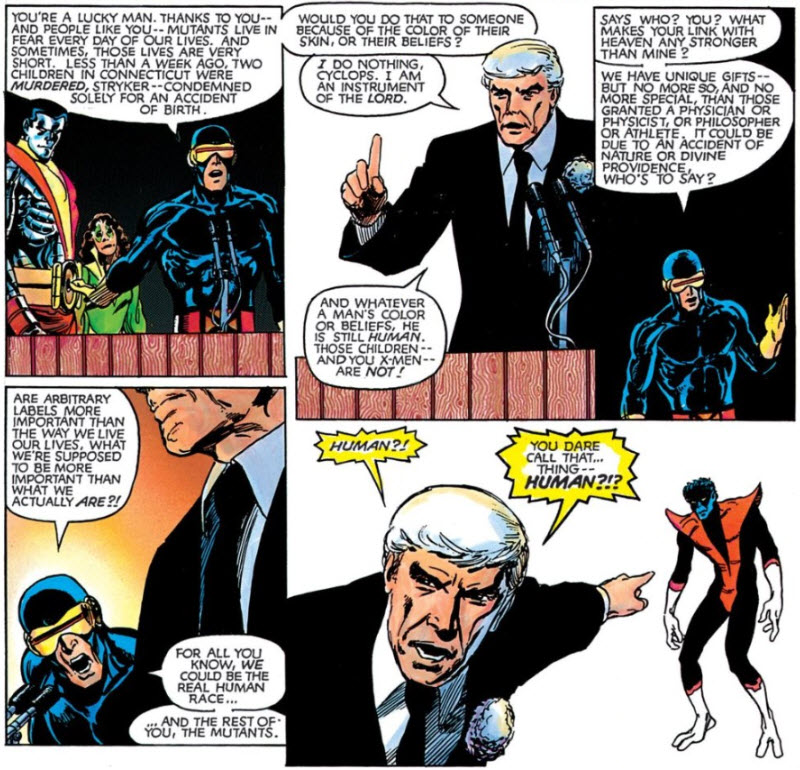
Recommendation: The Amazing Spider-Man
Recommended by Hussein Wasiti
There’s rarely a better feeling than reading a superhero series and thinking that it may be considered to be the definitive version of that character. I consider definitive takes to be stories that take advantage of a character’s long and storied history while managing to move forward and say something new; Marvel has a few of those currently being published, like Immortal Hulk or the Jonathan Hickman-curated X-Men line of comics. I consider Nick Spencer’s Amazing Spider-Man to be one of those definitive runs.
A big reason why I’m recommending this is due to the issue count: the book has been shipping twice monthly since July 2018, with issue #42 hitting stores last week. Thus, you’ve got a nice and hefty binge read ahead of you. It isn’t a slow read either, with Spencer packing each issue with as many character moments and action scenes as humanly possible.
Also, this is a hilarious book. Sure, it can get dark sometimes but Spencer is an expert at that balancing act, providing thrills and quips while also understanding that Spider-Man tends to get caught in pretty dramatic situations. One of those dramatic situations deals with a mysterious villain named Kindred who appears in the first issue of the series; we don’t know exactly who he is or what he wants, but we do know that he is holding some kind of grudge against the wall-crawler. According to Spencer, we’ll find out more about him soon.
Kindred isn’t the only villain Spider-Man has to worry about; Spencer has a knack for the more obscure and esoteric characters within the Marvel Universe, and many of them get their own time in the sun. Ever heard of Boomerang? Well, you’ll learn all about him over the course of this run. How about Gog? Check out the most recent issue to find out more about that gentle giant. More iconic villains like Kraven the Hunter, Vulture, and an insane (more than usual) Norman Osborn.
Spencer is also lucky enough to have worked with some incredible artists over the course of this run, such as Ryan Ottley, Humberto Ramos, Kev Walker, and Iban Coello. Each of them brings a unique perspective to the character but by far the freshest is that of Ottley’s, who manages to inject extreme energy into his action scenes along with engaging character acting which makes him one of the most interesting artists to tackle the character in his decades-long history.
If you’re so inclined, it’s possible to pair this series with Spencer and Steve Lieber’s Superior Foes of Spider-Man, which focuses on some of Spidey’s small-time villains as they band together to form a gang. It’s hilarious and one of the best comics of the last decade, and well worth checking out.
You can pick up everything I mentioned above at your local comic shop. It would be greatly appreciated if you helped out your retailer during these uncertain times, so contact them and see if they offer curbside pick-ups or shipping!
Next week: Another discussion of a classic Marvel tale, and more recommendations for your reading pleasure!


